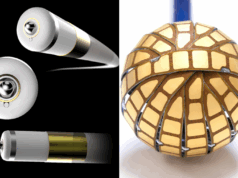Alan Cheng, Section of Cardiac Electrophysiology, Department of Medicine, John Hopkins University School of Medicine, Baltimore, USA, and others reported in a study, published ahead of print in Circulation Arrhythmia and Electrophysiology, that the reasons for loss of pacing with cardiac resynchronisation therapy (CRT) vary depending on the amount of pacing loss but inappropriate programmed atrioventricular delays was the most common cause of sustained loss of CRT pacing.
Cheng et al commented that the greatest benefit of CRT is seen in patients receiving in excess of 98% CRT pacing and added: “When loss of CRT pacing is seen, it often occurs as a result of intrinsic ventricular activation superseding biventricular resynchronisation. The reasons for intrinsic ventricular activation and their relative prevalence are poorly understood and important to assess since some of them may be amenable to simple treatments that could improve CRT pacing delivery”. Thus, Cheng et al, in their study, used a real-world cohort of patients with CRT to “better understand the reasons for CRT pacing loss and their relative prevalence.”
Examining data from the Medtronic Discovery Link remote monitoring database, the authors found that 40.7% (32,844 of 80,768) of patients had <98% pacing and found that the reasons for the loss of pacing varied depending on the amount of pacing loss. They reported: “Atrial tachycardia and atrial fibrillation (AT/AF) was a larger contributor to the loss of CRT in those patients with a greater reduction of CRT. In patients with 95–98% CRT, 19.2% of the loss of CRT occurred during AT/AT while in patients with <90% CRT, 51.8% of the loss of CRT occurred during AT/AF.” They added that premature ventricular complexes contributed to an estimated 20.9% of the loss of CRT in patients with 95–98% CRT pacing but only 9.5% of the loss of CRT pacing in patients with <90% CRT pacing.
According to Cheng et al, the largest contributor to sustained loss of CRT pacing (ventricular sensing episodes containing at least 10 consecutive beats with CRT) was: “inadequate programming of SAV/PAV [atrioventricular delays] intervals and lack of utilising rate-adaptive atrioventricular pacing”. They added that their results would “help shed light on the most common causes for suboptimal CRT pacing as a function of the degree of lost CRT pacing. More importantly, these data could lead to corrective actions and possibly improved CRT response.”









